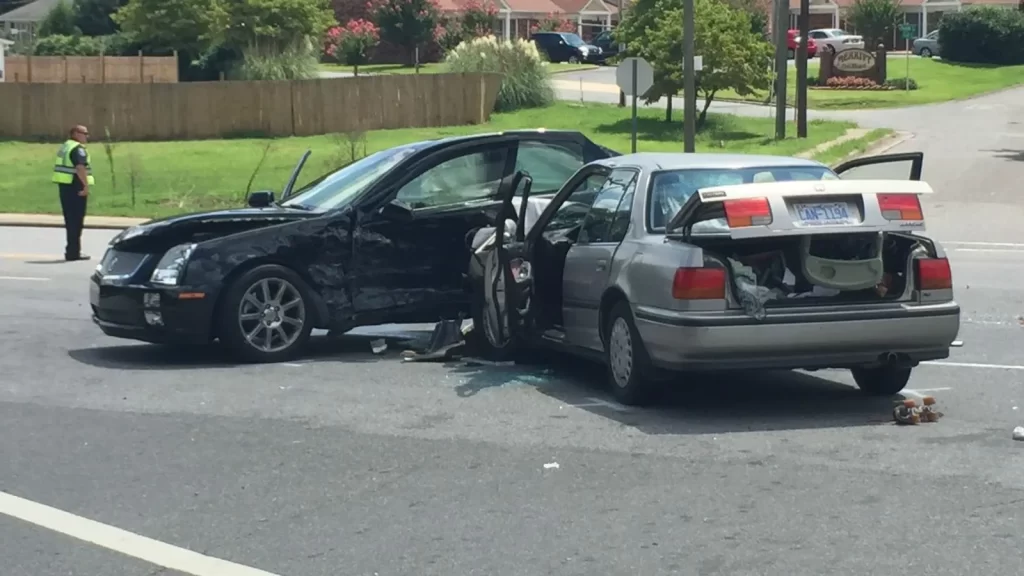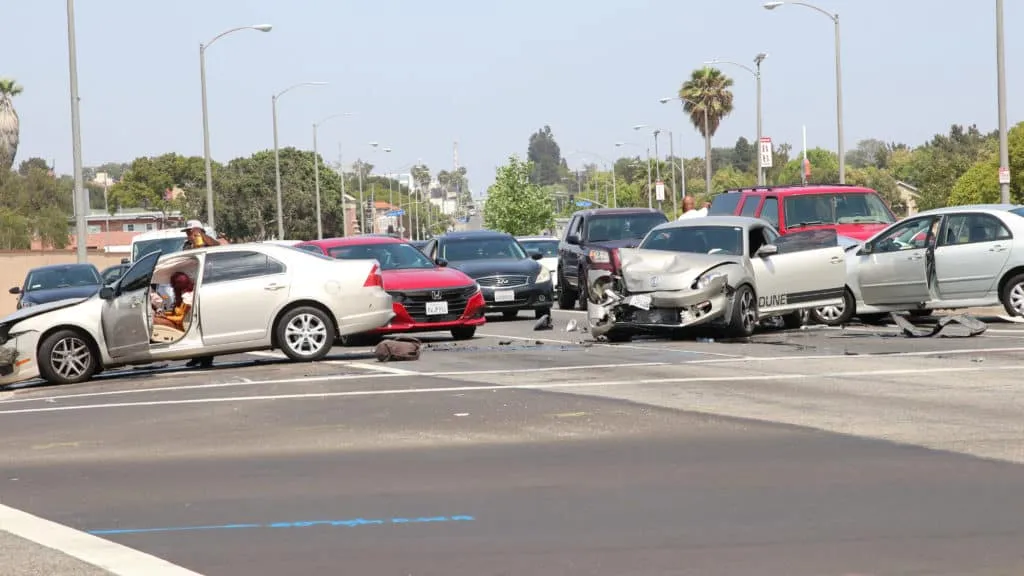Intersection accidents are a serious issue for drivers. Many of these incidents can be prevented with the right knowledge and safety measures. In this article, you’ll learn about the different types of intersection accidents, their common causes, risk factors, and the impact they have.
You’ll also find safety tips for avoiding intersection accidents and what to do if one occurs. Finally, you’ll learn about legal remedies for these accidents.
–Truck Accident Attorney South Florida
–Personal Injury Attorney in Brandon, FL
–Injury Attorney In West Palm Beach
–Jacksonville Personal Injury Attorney
–Personal Injury Attorney Sarasota
–Personal Injury Attorney Gainesville
-And more, visit our blog!!
What is 1-800-ASK-GARY?
1-800-ASK-GARY is a 24/7 complimentary helpline for individuals involved in motor vehicle accidents, including cars, commercial trucks, and motorcycles. Our team of specialists is available to provide assistance at any time of day for those injured in such incidents. Furthermore, we will directly connect you with a medical or legal expert who can support you in the aftermath of the accident.
→ Call us at ( 1-800-275-4279 )Types of Intersection Accidents
You may have heard of a few different types of intersection accidents.
Right-angle collisions are perhaps the most common. They occur when a vehicle fails to yield the right of way, turning into the path of another vehicle that had the right of way.
Left-turn collisions occur when a vehicle turning left collides with another vehicle going straight or turning right.
Rear-end collisions can also take place at intersections when a vehicle fails to stop or slow down in time to avoid a collision with another vehicle.
Head-on collisions are the most dangerous kind of intersection accident. They occur when two vehicles are moving in opposite directions and one fails to yield the right of way.
Common Causes of Intersection Accidents
Failing to obey traffic signals and other safety signs is often a major contributor to crashes at intersections. These factors can cause drivers to miss seeing a stop sign, yield sign, or red light. They can also prevent drivers from reacting quickly enough to a change in traffic conditions. Poor visibility due to weather or road conditions is another common cause of intersection accidents.
Additionally, distracted driving, such as texting, talking on the phone, or adjusting the radio, can lead to collisions. Impaired driving, such as driving under the influence of drugs or alcohol, is also a significant factor. Improper lane changing and tailgating can contribute to accidents as well. All of these factors can result in serious collisions, injuries, and even fatalities.
Risk Factors for Intersection Accidents
Being aware of the risk factors associated with intersection accidents is key to avoiding them. One of the most common risk factors is a driver’s inability to judge speed and distance. If a driver misjudges the speed and distance of an oncoming vehicle, they can easily collide at an intersection.
Another risk factor is poor visibility due to weather, lighting, or other environmental factors. Poor visibility can cause drivers to miss important visual cues, such as traffic lights, signs, or other vehicles.
Distractions, such as cell phones, passengers, or items inside the car, can also be a major factor in intersection accidents.
Finally, driver fatigue is a major risk factor, as it can impair a driver’s judgement and reaction time.
Impact of Intersection Accidents
Intersection accidents can have devastating consequences, with fatalities and injuries occurring all too often.
Understanding the impact of intersection accidents is critical to both preventing them and managing their aftermath.
It is important to consider how intersection accidents can affect lives and communities, and how to best address them so that they can be avoided in the future.
Fatalities
Crossing an intersection without due caution can be deadly. Intersection accidents and fatalities are an unfortunate reality. In the United States alone, 1.25 million crashes occur at intersections every year and more than 8,000 of these collisions result in fatalities.
The following are the three main causes of intersection fatalities:
- Driver inattention or distraction
- Running a red light or stop sign
- Poor visibility due to weather or poor lighting
These situations require drivers to be alert and focused on the road at all times to prevent devastating and fatal accidents. There are steps that can be taken to prevent fatalities at intersections, such as increasing driver education, implementing autonomous vehicle technology, improving road infrastructure, and installing more traffic signals.
Injuries
Moving away from fatalities, injuries are also common in intersection accidents. The severity of injuries vary from minor cuts and bruises to serious and life-threatening injuries. The following table outlines the different types of injuries and their levels of severity.
| Injury Type | Severity |
| Cuts/Bruises | Minor |
| Broken Bones | Moderate |
| Internal Injuries | Severe |
| Amputations | Severe |
| Traumatic Brain Injury | Severe |
Injuries sustained from an intersection accident can be debilitating or even life-changing. Victims often require extensive medical care and rehabilitation. The severity of the injury depends on the speed of the vehicles involved, the type of vehicles, and the safety features of the vehicles. Additionally, the condition of the intersection, such as the road surface, signage, and weather, can greatly affect the outcome of the accident.

Safety Tips for Intersection Accidents
It’s important to be mindful when approaching intersections to avoid accidents. When driving in busy intersections, here are some safety tips to consider:
- Check your mirrors and blind spots for other vehicles.
- Make sure you use your turn signals and be aware of the vehicles around you.
- Obey all traffic laws and signals, and proceed with caution.
Stay alert and pay attention to your surroundings. Allow extra time when traveling through intersections to be aware of pedestrians and cyclists. Be aware of vehicles turning left or right, and always be prepared for unexpected turns. If you need to stop, make sure that you leave enough distance between you and the vehicle in front of you.
Reporting Intersection Accidents
If you’re involved in an intersection accident, it’s important to report it to the authorities right away. Reporting an accident can help prevent future accidents, and can help protect you and other drivers from being held liable for any damages.
| Action | When | Why |
| Call 911 | Immediately | Inform them of the accident and any injuries |
| Exchange info | With the other driver | Get contact and insurance info |
| Take pictures | After the accident | Document the damage to both vehicles |
| Notify insurance | Within 24 hours | File a claim to cover damage |
| File a police report | Within 24 hours | Document the events leading up to the accident |
It’s essential to report an intersection accident as soon as possible to ensure safety and legal protection. Remain calm and follow the necessary steps, and don’t forget to take note of any witnesses who may be able to corroborate your story.
Legal Remedies for Intersection Accidents
You may have legal remedies available if you’re injured in an intersection accident. Liability issues can be complex, and it’s important to understand your rights when it comes to compensation.
It’s important to know the applicable laws and to consider whether you’re entitled to compensation for medical expenses, pain and suffering, and other damages.
Liability Issues
Liability issues stemming from car accidents at intersections can be complex. In determining who is responsible for the accident, the court looks at various factors such as the actions of each party leading up to the accident, the state laws that apply to the accident, and whether any of the parties involved were negligent.
If negligence is determined to be the cause of the accident, then the party responsible for the accident may be required to pay damages to the victim. This includes medical bills, lost wages, and even pain and suffering. The court may also order the negligent party to make restitution for any property damage that was caused by the accident.
In some cases, both parties involved in the accident may be found to be partially responsible for the accident. In these cases, the court may order each party to pay a portion of the damages. Additionally, if the court finds that a party was at fault for the accident, they may face criminal charges.
Liability issues arising from intersection accidents can be complex. It is important to understand the applicable laws and the potential consequences of being found at fault for an accident.
Compensation Rights
When you are found to be at fault for an accident, you may be legally obligated to pay damages to the victim. Depending on the circumstances, this could include medical expenses, lost wages, pain and suffering, and loss of consortium.
It’s important to know your legal rights in this situation, and to understand the potential consequences of being liable for an accident.
In certain cases, fault may be shared between multiple parties, including other motorists, pedestrians, or the government. In these cases, the court may apportion liability, meaning that each party is responsible for paying a proportional amount of damages. Additionally, a driver might be responsible for paying a certain percentage of damages even if they are not found to be directly at fault.
In some cases, a driver may be able to receive compensation from their own insurance policy if they are found to be at fault. This is known as a first-party claim, and the driver may be able to receive coverage for medical expenses, loss of wages, and other damages.
It’s important to be aware of your compensation rights when involved in an accident at an intersection. Knowing your legal rights can help ensure that you are not held liable for more than your fair share of damages.
Frequently Asked Questions
What Type of Insurance Coverage Is Typically Available for Intersection Accidents?
Typically, insurance coverage for intersection accidents includes liability, collision, and medical payments coverage. Depending on the policy, uninsured and underinsured motorist coverage may be available as well.
What Legal Rights Do Pedestrians Have When Involved in an Intersection Accident?
As a pedestrian, you have the right to safety and the right to seek compensation if you are injured in an intersection accident.
Are Intersection Accidents More Common in Certain Types of Weather?
Yes, intersection accidents are more likely to occur in certain types of weather. Poor visibility, slick roads, and strong winds can all lead to collisions. Drivers should take extra caution when driving in inclement weather.
Are There Any Technological Solutions That Can Help Reduce the Number of Intersection Accidents?
Yes, there are technological solutions available to reduce intersection accidents. Intelligent Traffic Systems, such as traffic signals, can monitor and adjust to the flow of traffic in real time. Additionally, self-driving car technology has the potential to minimize human error, and ultimately reduce the number of intersection accidents.
How Can Local Governments Help to Reduce the Risk of Intersection Accidents?
Local governments can help reduce the risk of intersection accidents by investing in infrastructure improvements, such as improved visibility, better road signage, and traffic calming measures.
Conclusion
As you’ve seen, intersection accidents can have devastating consequences, both for the individuals involved and for society as a whole. Knowing the common causes, risk factors, and safety tips can help you stay safe when driving through intersections.
If you’re ever involved in an intersection accident, it’s important to report it and seek legal counsel to make sure your rights are protected. By taking the necessary precautions and being alert, you can help make our roads a safer place for everyone.


